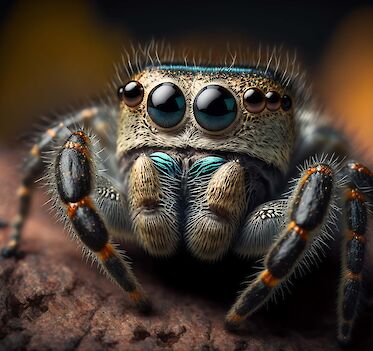Spiders & Spider Bites: A Healthcare Express Guide
As Halloween approaches, the excitement of costumes, decorations, and spooky tales fills the air. Among the creepy-crawlies that often make their appearance during this season are spiders. While spiders are fascinating creatures, there's also a lingering fear of spider bites. At Healthcare Express urgent care, we want to help you separate fact from fiction when it comes to spider bites and provide tips for staying safe during the Halloween season.
Why do I notice more spiders in the fall season?
- Mating Season: Many spider species, particularly those in temperate regions, enter their mating season in the fall. Adult spiders become more active as they search for mates. Male spiders, in particular, may be seen wandering in search of a female's web, which can lead to increased spider sightings.
- Prey Availability: In the fall, there is often an abundance of flying insects, such as flies and mosquitoes, due to the warm weather and decaying organic matter. Spiders, being opportunistic predators, take advantage of this increase in prey availability and become more active to catch food.
- Temperature and Weather: Spiders are ectothermic, meaning their activity levels are influenced by temperature. In many regions, fall temperatures are milder than the scorching summer heat or the cold winter chill, making it an ideal time for spiders to be active.
- Web Construction: Some spider species, like orb-weaving spiders, are more active in building or repairing their webs during the fall. This increased web activity can make their presence more noticeable.
- Life Cycle: Spider life cycles can vary, but in some species, young spiders hatched earlier in the year may reach maturity in the fall. This emergence of adult spiders contributes to the increased spider activity during the season.
- Migration: Some spider species exhibit migratory behavior in the fall. They may move to find suitable overwintering sites or disperse to new areas in search of food and mates.
- Indoor Movement: As the weather gets cooler, some spiders may seek shelter indoors. This can lead to more spider sightings in homes and buildings as they attempt to escape the dropping temperatures.
Meet the Spiders
When it comes to spiders, knowledge is power. Let's start by introducing some common spiders that you might come across:
Orb-Weaver Spider: These spiders are known for their intricate, symmetrical webs. They are harmless and often spotted in gardens.
- Identification: Recognized by intricate, circular-shaped webs, orb-weaver spiders com in various colors and distinctive marketing son the abdomen, are medium in size and range from .2 to 1 inch in length.
- Habitat: Orb-Weaver spiders are common in gardens, forests, and outdoor environments. You can oftentimes find their webs near outdoor lights to catch insects.
- Venom: The Orb-WAeaver venom is not medically significant to humans. Venom is used to immobilize tiny insects as prey and is not typically harmful to people and humans are not often bit by orb weavers.
- Symptoms: Orb-Weaver bites are rare, mild and localized with possible mild swelling or redness. Severe reactions are extremely rare.
- Treatment: Usually not necessary. Clean with soap and water and use over-the-counter pain relievers if needed. (But it's probably not needed).
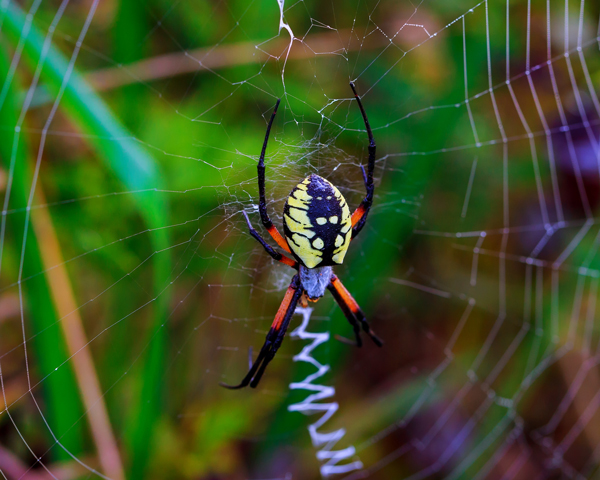
Black Widow Spider: Recognizable by their shiny black bodies and red hourglass markings, black widows are venomous but rarely bite humans unless provoked.
- Identification: Black widow spiders are known for their shiny black bodies and distinctive red or orange hourglass-shaped mark on the underside of their abdomen.
- Habitat: They are commonly found in dark, sheltered areas such as woodpiles, garages, basements, and outdoor sheds.
- Venom: Black widow venom contains a potent neurotoxin that affects the nervous system. Symptoms may include severe pain at the bite site, muscle cramps, abdominal pain, nausea, vomiting, and in rare cases, difficulty breathing.
- Treatment: Seek immediate medical attention if bitten, as antivenom may be necessary in severe cases. Prompt treatment usually leads to a full recovery.
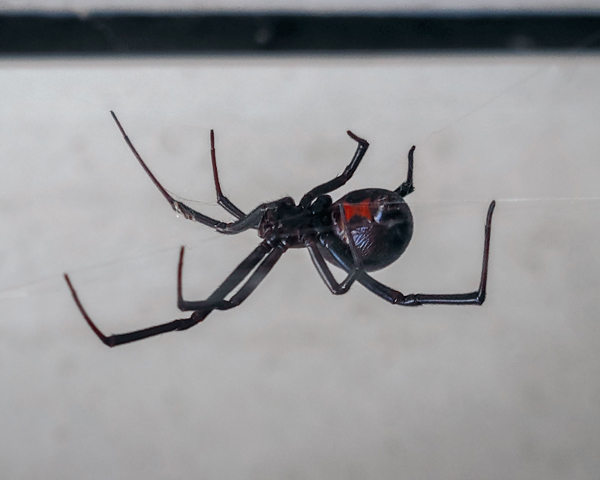
Brown Recluse Spider: Brown recluses are known for their violin-shaped markings. While their bites can be serious, they are reclusive and typically avoid humans.
- Identification: Brown recluse spiders are typically light brown to yellowish-brown and have a distinctive violin-shaped mark on their back (although this mark can be faint or absent in some individuals).
- Habitat: They prefer dark, secluded places such as closets, attics, and basements. Brown recluses are known for their wandering behavior and may be found in unexpected places.
- Venom: Brown recluse venom contains a cytotoxin that can cause tissue damage. Symptoms may include pain, redness, swelling, blistering, and, in severe cases, necrotic skin (tissue death).
- Treatment: Seek medical attention promptly if bitten. Treatment may include wound care, pain management, and, in severe cases, surgical removal of damaged tissue.
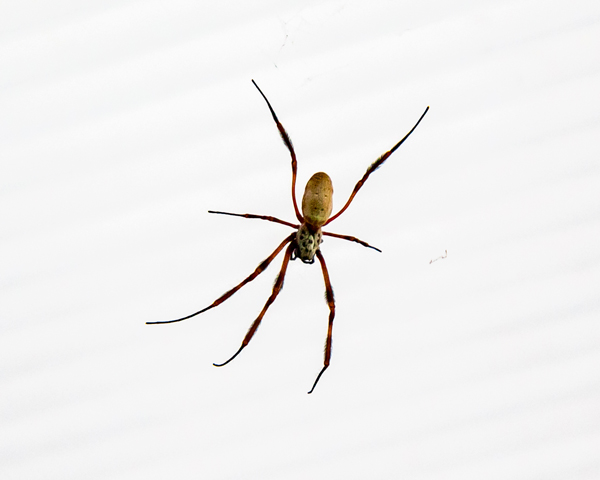
Wolf Spider (Lycosidae family):
- Identification: Wolf spiders are large, hairy spiders with prominent eyes. They vary in color, often blending into their surroundings.
- Habitat: Wolf spiders are typically ground-dwelling and can be found in gardens, lawns, and wooded areas.
- Venom: Wolf spider venom is generally not dangerous to humans. While their bites may cause localized pain and swelling, they are not considered medically significant.
- Treatment: Wolf spider bites can be managed with basic wound care and over-the-counter pain relievers.
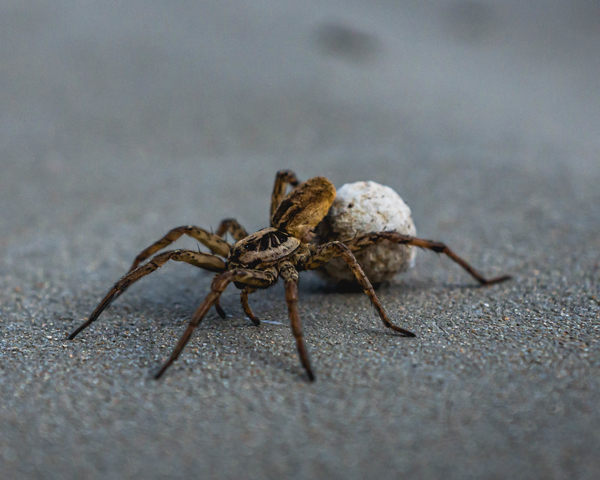
Southern House Spider (Kukulcania hibernalis):
- Identification: Southern house spiders are typically brown or gray and have a distinctive bulbous abdomen and long legs. They are often mistaken for brown recluses.
- Habitat: These spiders are often found in homes, particularly in dark corners, basements, and crawl spaces.
- Venom: While southern house spiders are venomous, their venom is not considered dangerous to humans. Bites may cause mild pain and swelling, but severe reactions are rare.
- Treatment: Basic wound care and over-the-counter pain relievers are usually sufficient for treating their bites.
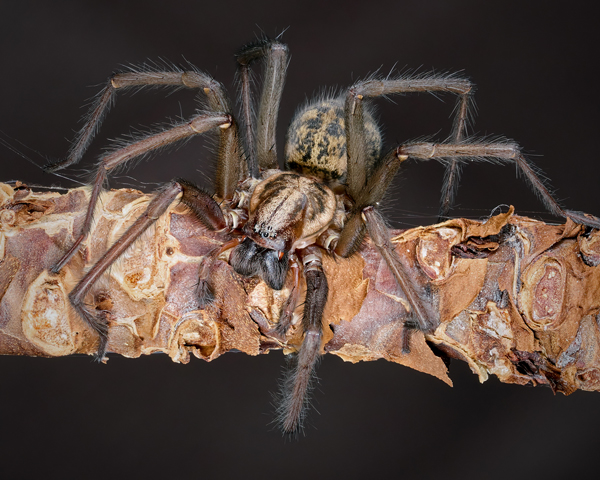
Tarantula (Theraphosidae family):
- Identification: Tarantulas are large, robust spiders known for their hairy bodies and legs. They come in various colors and patterns, depending on the species and have eight eyes arranging in two rows. giving them good vision.
- Habitat: Tarantulas are found in diverse habitats, including deserts, rainforests, grasslands, and burrows. They are terrestrial, often residing in burrows they dig themselves or using natural crevices for shelter.
- Venom: Tarantula venom is typically not dangerous to humans and is primarily used to immobilize prey. Most tarantula species have venom that is less potent than that of smaller, more venomous spiders. Bites from tarantulas usually result in localized pain, redness, and mild swelling.
- Treatment: Tarantula bites are generally not considered medically significant and do not require specific treatment. Basic wound care, such as cleaning the bite area with soap and water, is typically sufficient. Over-the-counter pain relievers can be used to manage any discomfort.
- Note: While tarantula bites are usually not a cause for concern, it's important to remember that some individuals may be more sensitive or allergic to spider venom, which can result in different reactions. If you experience unusual or severe symptoms after a tarantula bite, seek medical attention. However, such reactions are rare.

Remember that most spider species are harmless and play essential roles in the ecosystem.
Spider Bites 101 Spider bites occur when a spider injects venom into the skin. Not all spider bites are venomous, and some may not even be noticed. However, it's essential to be aware of the symptoms of spider bites, which can include redness, swelling, pain, and itching.
The symptoms of a spider bite can manifest differently from person to person, but some common indicators include:
- Redness: The area around the bite may become red and inflamed.
- Swelling: Swelling often occurs and can vary in intensity.
- Pain: Spider bites are typically painful, ranging from mild discomfort to more severe pain.
- Itching: Itching is a common symptom and can be quite bothersome.
- Pustules or Blisters: Some spider bites may develop small pustules or blisters at the bite site.
- Fang Marks: Venomous spiders may leave two small puncture marks resembling fang bites.
First Aid for Spider Bites If you or someone you know is bitten by a spider, here are some first aid tips:
- Clean the wound with soap and water.
- Apply a cold compress to reduce swelling.
- Keep the affected area elevated.
- Seek immediate medical attention, especially for venomous spider bites, as antivenom may be necessary.
Spiders and spider bites may seem spooky, but with knowledge and precautions, you can enjoy a safe and enjoyable Halloween season. Remember that severe reactions to spider bites are rare, but it's essential to seek medical attention if you suspect a venomous spider bite. At Healthcare Express Urgent Care, we're here to provide expert care and guidance for all your healthcare needs.
For any concerns about spider bites or other health-related issues, don't hesitate to contact Healthcare Express. Have a safe and spook-tacular Halloween!
